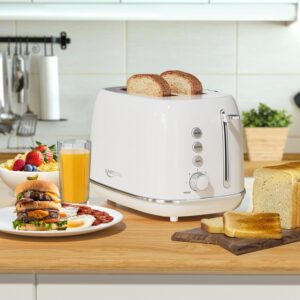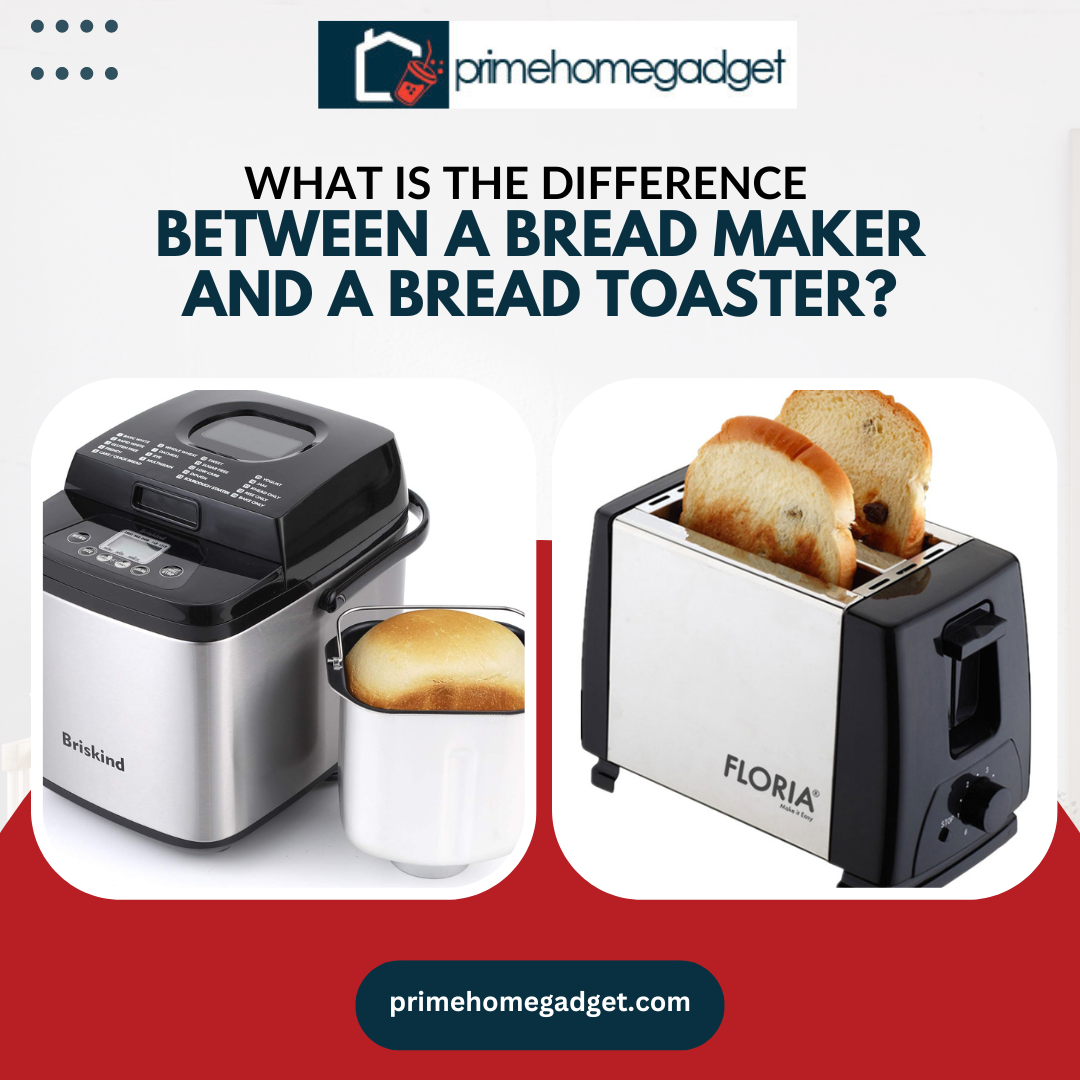The Difference Between a Bread Maker and a Bread Toaster: A Comprehensive Guide
When it comes to kitchen appliances, few are as cherished as the bread maker and the bread toaster. These two devices have transformed the way we prepare and enjoy our daily bread, but they serve very different purposes and functions. Understanding these differences can help you make an informed decision about which appliance suits your needs best. In this blog post, we’ll delve into the specifics of bread makers and bread toasters, highlighting their unique features, benefits, and limitations.
What is a Bread Maker?

A bread maker, also known as a bread machine, is an appliance designed to automate the process of making bread. From mixing ingredients to kneading dough and baking the loaf, a bread maker handles it all. This convenience allows users to enjoy freshly baked bread with minimal effort.
Key Features of a Bread Maker:
1. Automatic Process: A bread maker automates the entire bread-making process, including mixing, kneading, rising, and baking.
2. Customization: Users can add ingredients like nuts, seeds, and fruits, and select different settings for various types of bread (whole wheat, gluten-free, etc.).
3. Timing Options: Many bread makers come with a timer feature, allowing you to set the machine to bake bread at a specific time, so you can wake up to the smell of fresh bread.
4. Versatility: Besides bread, many models can make pizza dough, jam, and even cakes.
What is a Bread Toaster?

A bread toaster is a simpler appliance designed to toast slices of bread. It works by exposing the bread to radiant heat, turning the soft bread into a crispy, golden-brown slice. Toasters are a staple in many households, providing a quick and easy way to prepare breakfast or snacks.
Key Features of a Bread Toaster:
1. Speed: A toaster can toast bread in a matter of minutes, making it a convenient choice for quick meals.
2. Simplicity: Toasters are straightforward to use, with most models offering settings to control the level of toasting.
3. Compact Design: Toasters are typically small and can easily fit on kitchen countertops without taking up much space.
4. Variety: Toasters come in various sizes and styles, from two-slice to four-slice models, and some can also accommodate bagels and pastries.
Bread Maker vs. Bread Toaster: Key Differences
While both appliances deal with bread, they serve very different purposes and offer distinct advantages and limitations. Below is a detailed comparison to help you understand these differences better:
| Feature | Bread Maker | Bread Toaster | |
| Primary Function | Makes bread from scratch (mixing, kneading, baking) | Toast pre-sliced bread slices | |
| Process | Automated (mix, knead, rise, bake) | Manual (insert slice, select setting, toast) | |
| Usage Time | Several hours (2-4 hours) | A few minutes (1-3 minutes) | |
|
High (add ingredients, choose bread type) | Low (adjust toasting level only) | |
| Versatility | Can make various types of bread, dough, jam, cakes | Limited to toasting bread, bagels, pastries | |
| Size and Storage | Larger, require more counter space | Compact, easy to store | |
| Maintenance | More complex, parts to clean | Easy to clean, fewer parts | |
| Cost | Generally more expensive | Depending on the type of bread used | |
| Health Aspect | Control over ingredients for healthier bread options | Depending on the type of bread used |
Detailed Comparison
1. Primary Function: The most significant difference lies in their primary function. A bread maker is designed to create a loaf of bread from raw ingredients, handling every step from mixing to baking. In contrast, a toaster is designed to toast slices of bread, reheating and browning them to a desired level of crispiness.
2. Process: Bread makers automate the entire process, which includes mixing ingredients, kneading dough, allowing it to rise, and baking. This comprehensive process can take several hours. Toasters, on the other hand, are manual in the sense that you must insert the bread slices, select the toasting level, and then wait for a few minutes until the bread is toasted.
3. Usage Time: Using a bread maker requires planning due to the long baking time (typically 2-4 hours). Toasters are much quicker, providing toasted bread in just a few minutes, making them ideal for busy mornings.
4. Customization: Bread makers offer high levels of customization. You can experiment with different types of flour, add-ins like nuts and seeds, and adjust settings for various types of bread. Toasters offer limited customization, mainly in terms of adjusting the toasting level to achieve the desired browning.
5. Versatility: Bread makers are versatile appliances capable of making different types of bread, dough for pizza or rolls, and even non-bread items like jam and cakes. Toasters, while limited in their primary function, can toast a variety of bread products, including bagels and pastries.
6. Size and Storage: Breadmakers are larger appliances that require more counter space and storage. Toasters are typically compact, fitting easily on countertops or in cabinets.
7. Maintenance: Bread makers have several parts that need regular cleaning, including the mixing paddle and bread pan. Toasters are easier to maintain, often requiring only periodic cleaning of the crumb tray.
8. Cost: Bread makers are generally more expensive due to their complexity and multifunctional capabilities. Toasters are more affordable, making them accessible to a wider range of consumers.
9. Health Aspect: With a bread maker, you have complete control over the ingredients, allowing you to make healthier bread options free from preservatives and additives. The health aspect of a toaster depends on the type of bread you choose to toast.
10. Time Convenience: For immediate consumption, toasters are highly convenient, offering a quick and easy way to prepare toasted bread. Bread makers, while producing fresh bread, require a longer time commitment and planning.
Both bread makers and bread toasters have their unique places in the kitchen, catering to different needs and preferences. A bread maker is ideal for those who love the process and taste of homemade bread and want control over their ingredients. On the other hand, a bread toaster is perfect for those who need a quick, easy solution for their breakfast or snacks.
Understanding these differences can help you decide which appliance is right for you, based on your lifestyle, cooking habits, and culinary preferences. Whether you choose a bread maker, a toaster, or both, each will undoubtedly enhance your kitchen experience and bring joy to your daily bread consumption.

